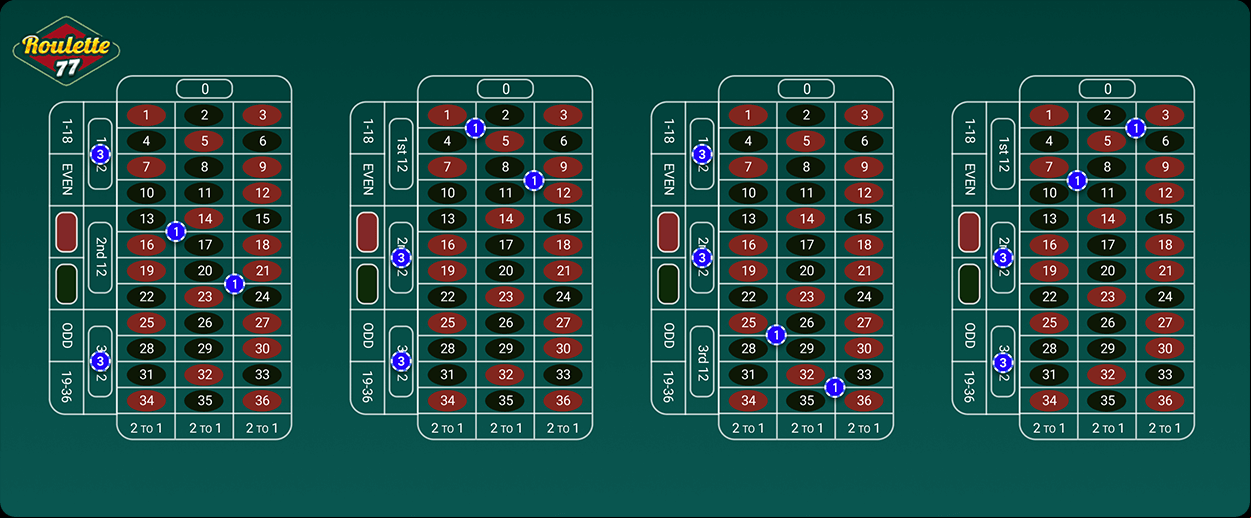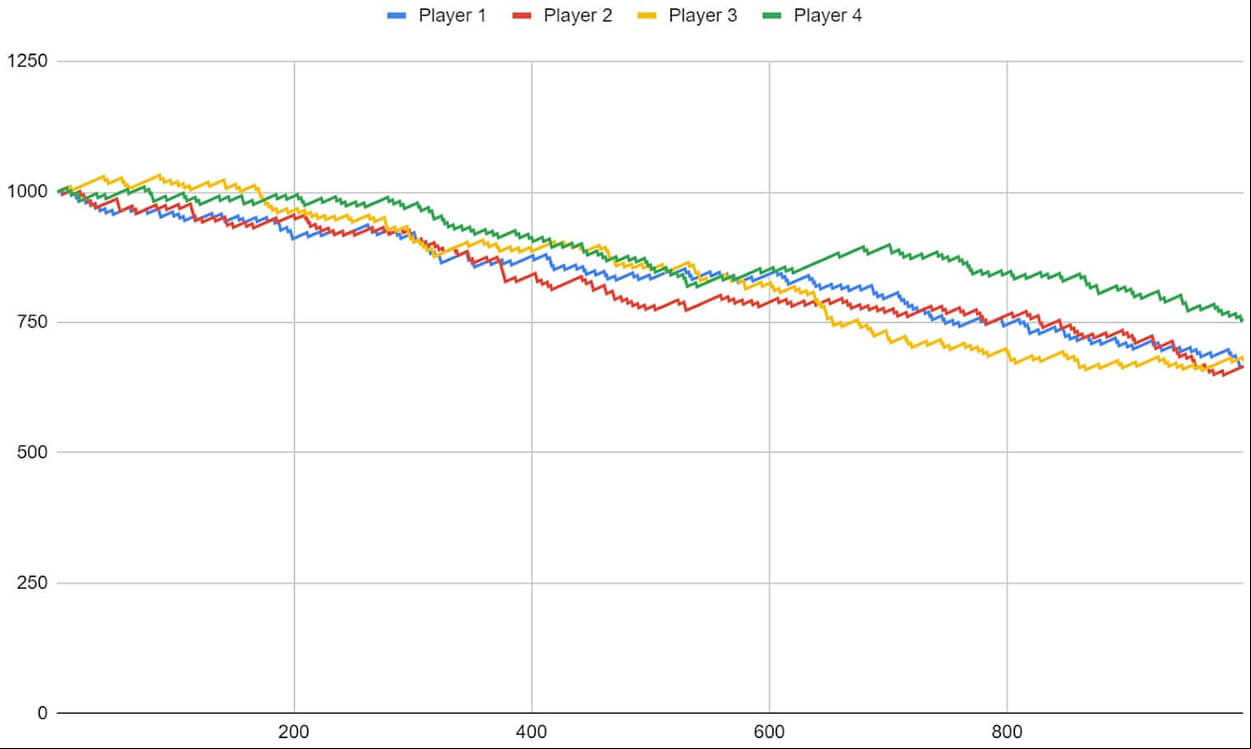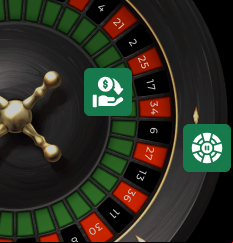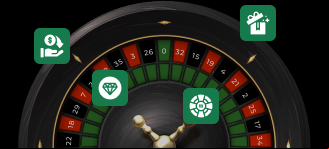Romanovsky Strategy Explained
The European and French variants of roulette have a total of 37 numbers, which means there are 37 possible outcomes. Romanovsky system covers 32 of these outcomes at the same time by placing certain bets. This increases the player's chance of winning to 86.48%. In order to get such a high probability, it is imperative that you place your bets on the options determined by the system. These options are to place “1st 12” and “3rd 12” bets at the same time and cover the remaining 8 numbers with square bets. To explain it more simply:
- You place three chips both on “1st 12” and “3rd 12” bets (two of the three dozen). Doing so will cover 24 numbers in total.
- You place two more chips to cover the remaining eight outcomes (square bets). For this, it is sufficient to put your chips on the non-overlapping corners of these numbers (one chip for each).
- In the image below, you can see what the table will look like when you place all these bets.

If we analyze this image, we will see that we simply wager 8 AUD in total. Their distribution is as follows:
- 3 AUD = 1st 12 (dozen bet)
- 3 AUD = 3rd 12 (dozen bet)
- 1 AUD = first square bet
- 1 AUD = second square bet
Such a wager combination will always offer an 86.48% chance of winning. This is because a spin will always result in one of three outcomes:
- By winning one of your square bets. The probability of this happening is 21.62%. If this is the result, you will make a total profit of 1 AUD (as your other wagers will still lose).
- By winning one of the dozen bets. The probability of this happening is 64.86%. For the same reason, you make a total profit of 1 AUD here as well.
- By resulting in a number not covered by these bets. This is the only outcome you will lose, and your total loss will be 8 AUD. The probability of this happening is 13.52%.
Let's take a closer look at how the Romanovsky system works, using an example of 5 rounds:
- Spins 1
Suppose we were unlucky and lost all wagers. Our total loss is 8 AUD.
- Spins 2
We won a square bet and were paid 1 AUD. Currently, our total loss is 7 AUD.
- Spins 3
We won a dozen bet and again, got paid 1 AUD, reducing the total loss to 6 AUD.
- Spins 4
Once again, we won the dozens bet, making the total loss 5 AUD.
- Spins 5
If we win the last spin too, we will lose only 4 AUD in total.
Testing the Romanovsky System to See Its Effectiveness
The example above consists of only five steps and does not give an idea of how effective this system is in the long run. Therefore, we created a simulation of four players and performed a total of 1,000 spins. Each of our players has a bankroll of 1,000 AUD and in every spin, they place bets according to the Romanovsky system. The reason we used four players was to detect statistical deviations. We graphed the results of this 1,000-spin simulation with Google Sheets: you can see it below.

The fact that the results are quite close to each other means that statistical deviations do not have a significant role in the functioning of the system. After 1,000 spins were completed, the bankroll of all players fell below the starting value. According to the simulation result:
- Players 1 and 2 completed the spins with a bankroll of 666 AUD and took a loss.
- Player 3 finished with a bankroll of 675 AUD.
- Player 4 completed the spins with a bankroll of 756 AUD.
Only Player 3 made a profit of 32 AUD on the 88th spin, but this did not last long: he also completed the simulation with a loss. In short, they all went bankrupt. This shows, first of all, that the Romanovsky system does not work in the long run and is designed to be used in the short run. You must stop playing as soon as you get a profit; otherwise, you lose.
Should You Use Romanovsky Roulette Strategy?
Do not consider an increased chance of winning as a “guarantee”: all probabilities are reset with each spin and the probability of losing is 13.52% in the Romanovsky system. This may not seem like a high number, but in the long run, it will slowly deplete your bankroll. After the first 200 spins, this will become more visible, and your losses will start to affect you more and more. Since there is no option that will allow you to recover your losses like progressive strategies, we can say that you will always lose in the long run. You can use this system for a maximum of 100 spins on bankrolls of 300 AUD or more, but don't forget to stop playing as soon as you make a profit.
Conclusion
Most players focus on the high chances of winning in this system and have an unwavering belief that it “works” for the same reason. But as we mentioned above, you also need to be mindful of the possibility of losing. Almost any strategy focused on increasing the chances of winning becomes useless in the long run, and this is also true for Romanovsky. We can even say that the losing curve starts earlier in this system. We can also say that Romanovsky allows you to make a small profit in the short run, but it will always result in bankruptcy in the long run because it does not have a feature that allows you to recover your losses.














